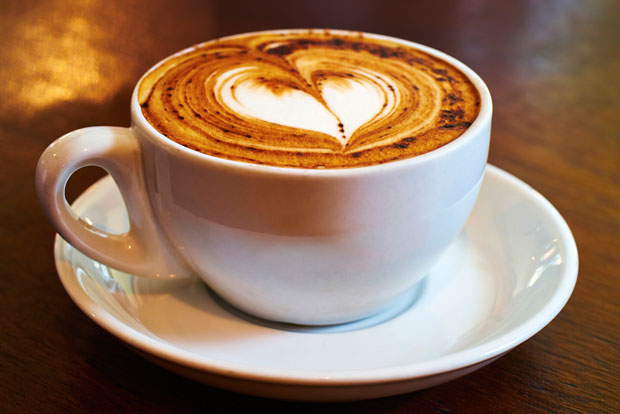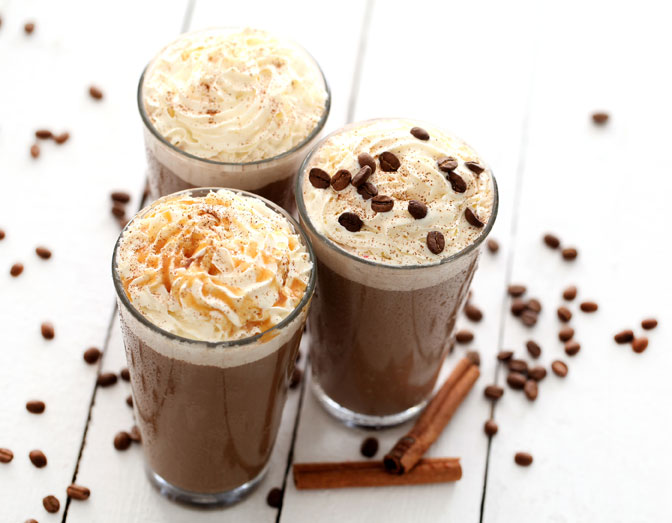It would be fair to say that Italians are passionate about coffee. So much so, you would think they had discovered it. They didn’t. To make up for this, however, they have invented a coffee culture unequalled anywhere else in the world.
When coffee was first shipped from the Middle East to Venice, it caused a furore and was almost banned from entering the port. Coffee houses were already established in Istanbul, but the fate of this stimulating drink was in the hands of Islamic preachers, who at first considered it on a par with alcohol. Eventually, it was accepted under Islamic law and trade began briskly in the 16th century.
Coffee houses in Venice sprung up and very quickly the black liquid, which was until now solely consumed as a medicinal drink, achieved cult status, making it a luxury item, out of reach for most of Venetian society. However, as coffee plantations became established within the European colonies in South America and Asia, availability increased, the price decreased and as it became more accessible to the poorer population, it ceased to be seen as purely medicinal.

With over two hundred coffee houses along its canals, the reputation of this wonderful new drink soon spread to the neighbouring cities of Verona, Milan and Turin. Elegant new coffee houses were built and some of these original houses still remain to this day.
Turin’s oldest surviving coffee house opened in 1763: Caffè Al Bicerin, situated on Piazza della Consolata, is home to the historic drink of Turin, the ‘Bicerin’, whose recipe remains a closely guarded secret. Once frequented by the aristocracy, including the likes of Puccini, Cavour and Dumas, the tiny space has only eight marble-topped tables meaning there is often a queue of people waiting outside to sample the delights within.
Coffee consumption soon spread to Rome and the rest of the peninsula, with imports arriving at the ports in Naples, Bari and Sicily. The spread nationwide escalated and it wasn’t long before every household in Italy became familiar with the drink, eventually evolving in a culture that is still relevant today.

Perhaps one of the most iconic images that instantly quantifies the importance of coffee in Italian society is the ‘macchinetta’. The famous aluminum stove-top percolator, designed and produced by Bialetti in 1933 can be found in every Italian kitchen. This easy-to-use coffee maker is capable of producing a faultless espresso every time. So perfect is the design that it’s been emulated, but never bettered. However times change and now electric coffee machines stand on bar counters, forcing scalding water over ground coffee beans to create a rich, creamy shot of caffeine.
Howard Schultz, the CEO at Starbucks, has said in the past that it was during a trip to Milan that he became inspired to create the now international coffee house model. In reality, the Italian coffee bar and the U.S. chain are poles apart. The partaking of il caffè is a way of life. Most Italians have no desire to sit reading the latest best-seller whilst sipping a caramel-flavoured latte. In fact ask for a latte in Italy and you’ll get more than a confused look from the barista. In 2009, while staying in L’Aquila, a friend ordered a latte and was surprised to be given a glass of tepid milk.
So what are the unwritten rules of Italian coffee culture?
Ask most people and they’ll tell you, never order a cappuccino after 11.00 am. This is technically true; Italians view the milky drink only as a breakfast beverage; however, at holiday resorts, coffee bars can still be seen serving cappuccini (the plural) to tourists, well into the afternoon, but you’ll be hard pressed to find any restaurant that will serve any milk-based coffee after dinner.

At most Italian bars, including motorway services, you will be expected to pay for your drink before it is prepared for you. Never ask for an espresso, simply request, ‘un caffè, per favore’ and after you hand your receipt to the barista, you’ll receive a short, strong black shot accompanied by a small glass of water for palate cleansing. If you prefer your coffee to be white, then it’s quite acceptable to ask for a ‘caffè macchiato’, an espresso with a dash of steamed milk.
If a shot of coffee isn’t enough to hit the spot, ask for a ‘caffè doppio’, which is quite literally a double espresso, but be aware this isn’t an Italian habit and if you really want something more substantial then ask for a ‘caffè lungo’, an espresso diluted with hot water making it a longer, but weaker tasting drink. If you see ‘caffè corretto’ on the menu, it’s best to check your watch for the time as it’s an espresso complete with a shot of liquor: my local bar serves it with a generous slug of grappa, so isn’t really recommended for breakfast or mid-morning consumption.

Once you have become experienced in the politics of coffee purchasing and you’re travelling around Italy, why not try some of the regional recipes that are on offer. In Trentino ask for a ‘cappuccino Viennese’ and you’ll be served a delicious frothy coffee with chocolate and cinnamon. In the Marche region, stop for a ‘caffè anisette’ for an aniseed-flavoured espresso, in Naples enjoy coffee flavoured with hazelnut cream and, while in Sicily, why not indulge in a ‘caffè d’u parrinu’, mentioned by Nicoletta Agnello Hornby in her novel "Con un filo d’olio", an Arabic-inspired coffee flavoured with cloves, cinnamon and cocoa powder .
Finally, a Neapolitan tradition that is slowly dying out is the practice of ‘caffè sospeso’, meaning suspended coffee: it’s the practice of paying for two coffees but only consuming one, leaving the other for a stranger to enjoy for free. Because every Italian loves good coffee, and there is no better feeling than that of sharing a cup with a stranger.














